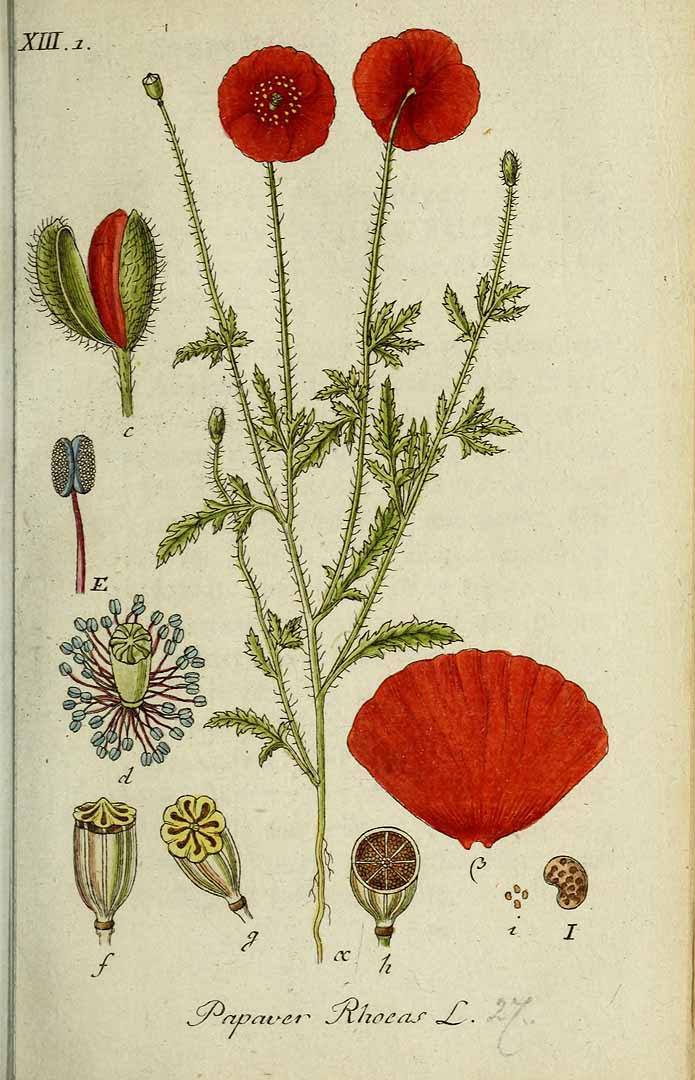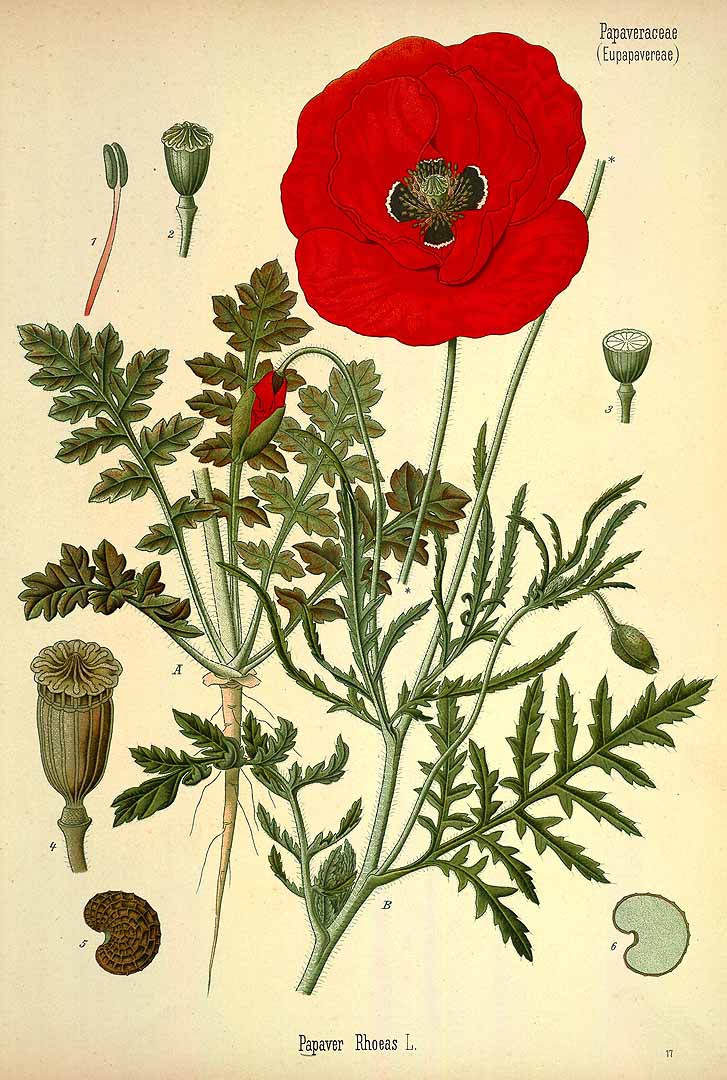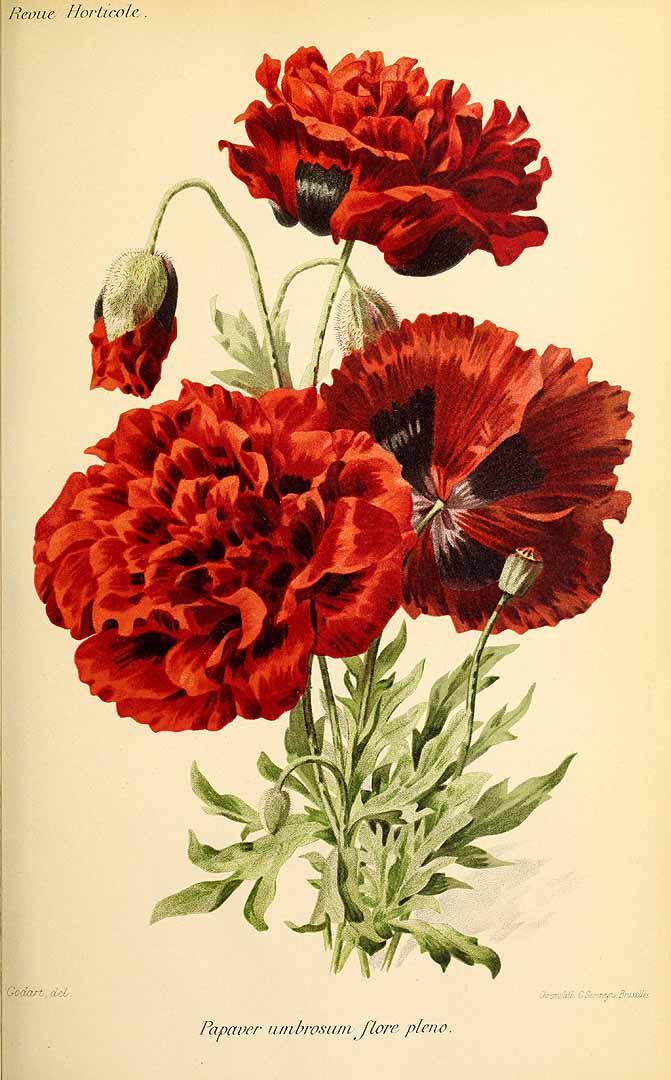! Nouveau site ici !
Vita > Plantae > Magnoliophyta > Magnoliopsida > Papaverales >
Papaveraceae > Papaver
Papaver rhoeas
(Coquelicot)



 | ** - ***
| ** - ***
Vita > Plantae > Magnoliophyta > Magnoliopsida > Papaverales >
Papaveraceae > Papaver
Papaver rhoeas
(Coquelicot)

Une plante annuelle qui atteint 60 cm de haut. Il mesure 15 cm de diamètre. La forme des feuilles et la couleur des fleurs peuvent varier. Les feuilles sont douces et velues et profondément divisées. Les feu... (traduction automatique)
→suite
⬀
Le  donne accès au menu
donne accès au menu (c'est votre point de repère) 😊 ;
En dessous vous avez la classification, à partir de la vie (Vita, premier rang) jusqu'à la classe au dessus de la plante, dont vous trouvez ensuite le nom scientifique/botanique (latin) puis le nom commun (français), le cas échéant ;
C'est aussi un lien vers la fiche complète (tout comme la ✖, en bas à droite, et le +, en dessous de la description) ;
Vient alors l'illustration (ou ce qui la remplace, en attendant), la comestibilité :
Et en bas
⬂







